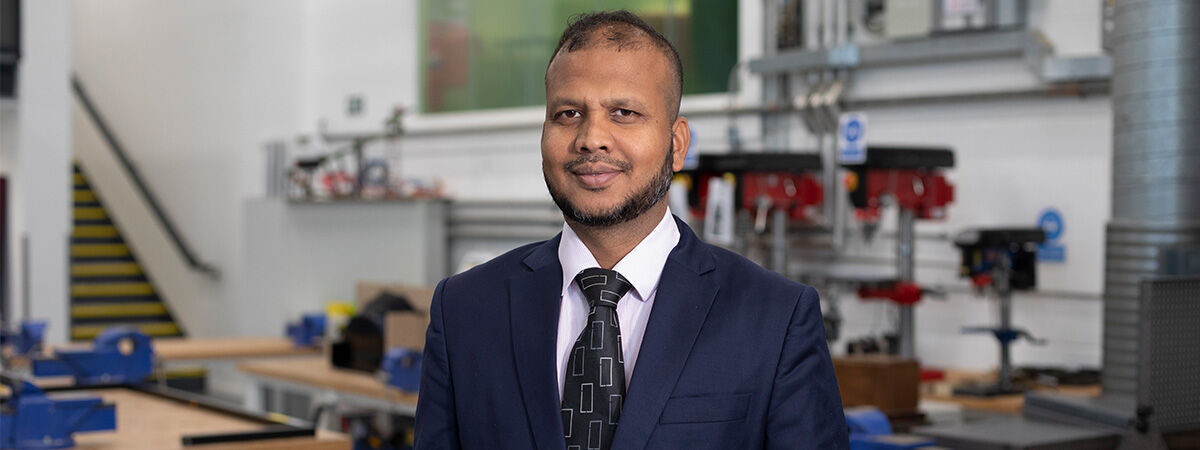
Mostafiz Rahman
Associate Professor, Engineering
Mostafiz Rahman is currently working as an Associate Professor for Engineering.
Biography
I am registered as a Chartered Engineer with the Institution of Mechanical Engineers (IMechE) and a fellow of Advanced HE (HEA), which recognises my professional competency in engineering and teaching-learning practices.
Expertise in Engineering
I have expertise in nanoparticle synthesis and characterisation, low-carbon alternative fuels, combustion diagnosis, automotive emissions measurement and assessment and emissions control technology.
I also specialise in Thermo-fluid systems, embedding knowledge of thermodynamics, heat transfer, and fluid mechanics. I also teach powertrain modules at level 6 and level 7. I also have extensive experience working in collaborative industrial projects dealing with fuels, combustion, automotive emissions, emissions control in underground mines, and technology development for emissions measurement and control, and so on. Most importantly, student-centered teaching-learning practices are the core feature of my teaching-learning strategy.
Industry Connections
Our course team has an excellent connection to the industry and professional bodies. We secured over 50% of industrial projects for our final year students' honours projects in the last few years. Students get the opportunity to work on an industrial engineering problem under the mentorship of an engineer from the respective industry.
Notable projects
I have worked on a wide range of interesting projects addressing challenges to low-carbon fuel formulation, mitigating automotive emissions, and characterising nanoparticles to better understand their adverse effects on human health and climate. One such project was the PEMs4Nano project in which I worked as a postdoctoral researcher at the University of Cambridge, in collaboration with leading Industry partners Horiba Scientific, Bosch GmbH, TSI Inc, IDIADA Ltd. I worked on the development of a new solid particle number-portable emissions measurement system (SPN-PEMs) capable of measuring down to 10 nm vehicle engine exhaust particles robustly.
The outcome of this project has paved the pathway for the European Commission (EC) to amend the current gasoline direct injection (GDI) vehicle emissions regulation, and lower the cut point of solid particle number emission standard from 23 nm to 10 nm. A significant challenge of this project was to optimize a catalytic stripper for optimal volatile and semi-volatile HC removal while ensuring higher (>60%) solid particle penetration at 10 nm size to the particle counter. He optimized the design of a catalytic stripper for the lowest diffusional and thermophoretic losses and achieved 75% solid particle penetration at 10 nm size with adequate HC removal. The optimised CS unit is implemented in the new Horiba 2100 SPSS system and OBS-ONE-PN PEMS system and tested during pilot-scale experimental measurement in Germany and Spain. I also worked on industrial projects during his postdoc tenure at QUT (Australia), where he worked with industry partners i.e. skillPro Pty Ltd, Australian Coal Association, Eromanga Fuel, Peak 3, Licella Australia Ltd, Mainline Dynolog Dynamometers Ltd, and more.
I am currently working on emerging low-carbon fuels i.e, hydrogen, ammonia, and synthetic fuels (e-diesel), and their implication for future mobility, heavy-duty vehicles, and hybrid vehicles in particular. I am also interested in research on advanced combustion engines (free piston engine, HCCI, and RCCI engine), which have far greater potential than conventional engines as range extenders of Battery Electric Vehicle (BEV).